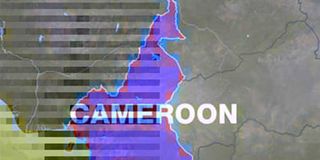Cameroon to tighten border access rules

What you need to know:
- At an extraordinary summit in the Chadian capital of N'Djamena last month, CEMAC members; Cameroon, Chad, Gabon, the Republic of Congo, the Central African Republic and Equatorial Guinea formally declared that the delayed free circulation scheme had now been ratified by all members.
Authorities in Cameroon say border security will be tightened despite a free movement of people and goods deal by the six-member countries of the Economic and Monetary Community of Central African States (CEMAC).
At an extraordinary summit in the Chadian capital of N'Djamena last month, CEMAC members; Cameroon, Chad, Gabon, the Republic of Congo, the Central African Republic and Equatorial Guinea formally declared that the delayed free circulation scheme had now been ratified by all members.
Apparently, Cameroonians authorities fear the opening of borders will encourage massive illegal immigration of citizens of the other member states.
“The suppression of visa requirements and free movement of persons and goods in the sub region is not synonymous to the disappearance of national borders,” Cameroon's Territorial Administration and Decentralisation the minister Rene Emmanuel Sadi said.
“It is therefore incumbent on us to intensify the fight against illegal migration, whose perpetrators often indulge in illicit activities in their host countries,” he stated calling on regional governors to intensify border surveillance.
Mr Sadi was speaking at the second and last semester meeting of Cameroon’s 10 regional governors in the capital Yaoundé.
External Relations minister Lejeune Mbella Mbella briefed the regional chief executives on the relationship between administrative authorities and consular representations, while the country’s police boss, Mr Martin Mbarga Nguele, talked about the ramifications of the free movement of people and property in the CEMAC zone.
The meeting that ends Wednesday, was held under the theme: “Administrative authorities, changes in security threats, challenges of living together and prospects for sub-regional integration.”



